This newspaper’s headline stated bluntly on June 10th, 1991: ‘Down through after shambles’.
A narrow win in vile conditions sent the county on their way towards an achievement that appeared as remote as the sun that day in Newry, the first All-Ireland won by a county from outside Leinster and Munster in 23 years – in fact since Down themselves did so.
It would transform the GAA and inspire their province. During the intervening 30 years Ulster have won nine All-Irelands, spread democratically around five different counties – an unparalleled show of strength in depth.
Ross Carr won two All-Irelands and managed Down in later years. A key personality on the 1991 team, he says that like all foundation myths, the idea that the campaign had started with a contender for the worst match in history was far-fetched.
“It was grim stuff but myths take off with the benefit of hindsight. It was no different than any number of Ulster championship games at that time. They were attritional battles without style or grace and no one paid them any attention because the teams didn’t go on to do anything, let alone enjoy national success.
"The most striking thing about the day was the downpour. It bucketed. Armagh had chances to get scores that would probably have put us out but they weren't going to go on and do anything."
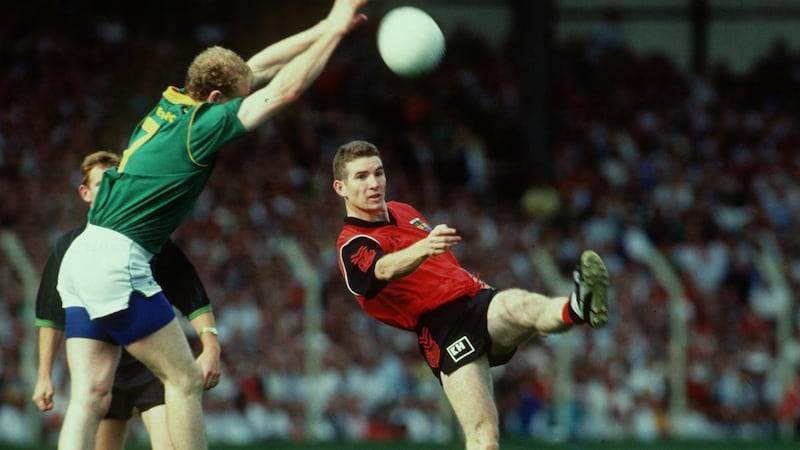
In those years, Down were perceived as almost princes in exile. Their groundbreaking success in the 1960s evoked all the excitement and colour of that decade before the Troubles erupted the very year they won their third All-Ireland in 1968.
Players in the county had been reared on such stuff and it was true that whereas they believed in themselves, maybe in ways that other Ulster teams didn't, they hadn't achieved very much since the 1960s, a couple of provincial titles and a league win in 1983. A handful of the players from that win were still around eight years later. Greg Blaney was probably the best known, as an All Star and an Ireland international rules player.
“I played all through the 80s and we certainly promised a lot more than we delivered. There were years when we were favourites to win Ulster but we flattered to deceive. In 1991 I wouldn’t have thought that there were major expectations but at the same time, I certainly would have felt that we weren’t as surprised as the rest of the country when we won it.”
Under manager Peter McGrath, they were structured to play to their strengths. Carr and Gary Mason, the other wing forward, had played at wing back but by relocating them, Down utilised their kicking abilities – they took frees, left and right – and their defensive instincts when required. In between them on the 40, Blaney pulled strings as both a physical centre forward and a fine ball player.
“I started out at midfield earlier in the 1980s,” says Carr, “and then moved to wing back. Gary had been a defender all his career – probably one of the best defenders in Down. Pete and John [Murphy, selector], God rest him, had an idea of what they wanted from the team. They wanted wing forwards who played in central positions for their clubs, as ball winners – knowing that they had access to three exceptional forwards.
“If they could win possession and transfer it quickly, we’d be in business. One of the reason Gary and I were picked is that we weren’t ball carriers; we were ball kickers so if you could win possession and move it, it would give James [McCartan] and Mickey [Linden]) or [Peter] Withnell a better chance given there were no blanket defences in those days.”
He is nonetheless sceptical about groundbreaking tactical models.
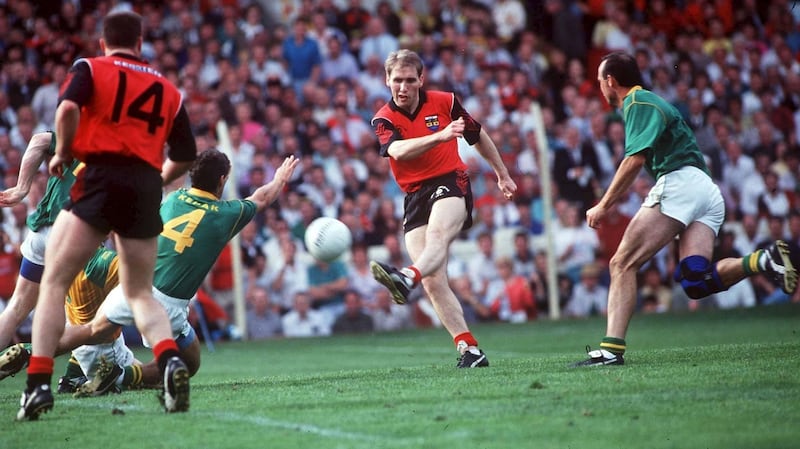
"If you remember back to the 1970s and '80s when Ger Power and Pat Spillane played on that incredible Kerry team, they were often in their own half retrieving ball. This new term, 'transition'? That's nonsense – it was always there; just it was called getting the ball forward.
"Look back at footage of the Down team in the 1960s where you had [Seán] O'Neill at 10 and Paddy Doherty at 12. They weren't simply postage stamps either."
Mickey Linden kicked the penalty that effectively beat Armagh and got the ball rolling. In the Ulster final he ghosted on to a pinpoint, long pass from Blaney to stamp Down's authority on Donegal.
He says that the All-Ireland winning minors of 1987 had a big influence. "James McCartan and Conor Deegan came through from that minor squad and were two key players. They provided something missing that was needed: Conor's size and stature could be played at full back and midfield and of course James brought something special, as he was so dynamic and was always going to cause a lot of problems up front.
“As we went through the season, our confidence rocketed. I’ve no doubt that the Ulster semi-final against Derry was the making of the team. We drew the first day and Ross scored a late equaliser and the win in the replay really got us up and running.”
The free was from a long way out, a distance Carr says has been embellished in the telling. “As time went on, it crept out to about 80 yards.”
But it was 55 or 60, surely?
“Aye, we’ll happily leave it at that!”
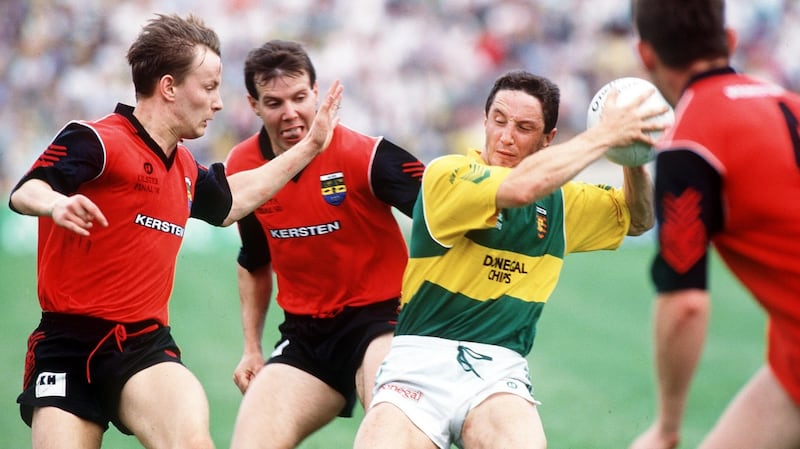
There was also the wider world. In July, Meath held off Dublin after four matches in Leinster. During that saga Cork, then chasing a three-in-a-row, were beaten by Kerry.
That set up the All-Ireland semi-final for Down – they had never lost a championship match to Kerry. This record was a matter of amusement in the county in that it disguised that they never had to play them in the 1970s or ’80s.
Rather than place too much trust in such a record over three matches 30 years previously, Down were more interested in the fact that Kerry were trying to rebuild after eight All-Irelands in 12, hadn’t won Munster in four years and as a result lacked experience.
So it broke. Peter Withnell – a relatively recent convert from soccer – scored two goals in a comfortable victory.
Ask Linden for his favourite memory of the final and he doesn’t miss a beat.
“Barry Breen’s goal and the movement for it for me was the highlight of the game. That spell either side of half-time – we were just unstoppable and yet Meath nearly came back at us.”
It symbolised the exuberance of Down ’91. Withnell collected a ball on the 20-metre line in traffic and got it away to McCartan. In quick succession, he, Blaney and Linden take on and beat defenders at close quarters before Linden floats the ball across the square to the unmarked Breen, who palms to the net.
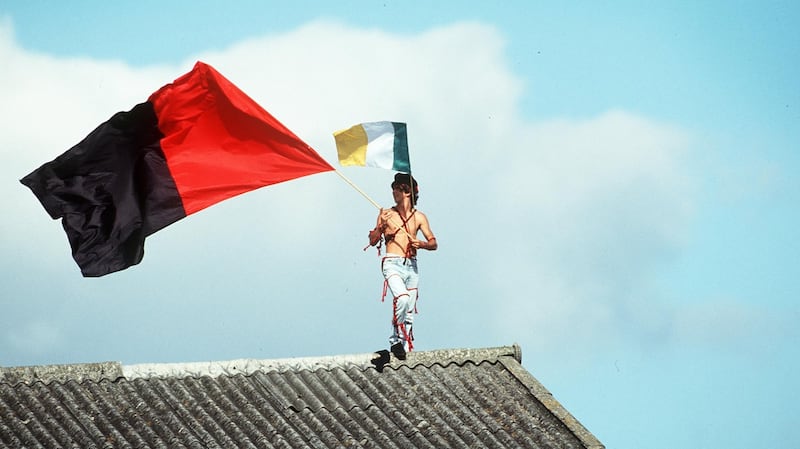
Those 28 minutes before and after the interval saw Down outscore Meath 1-9 to 0-1. It was blitzkrieg and yet amazingly, Meath nearly clawed it back to two points. Only a point-blank save by Neil Collins prevented a goal by Bernard Flynn.
The team came again in 1994, defeating Dublin in the All-Ireland final. Since then, nothing except a final conjured out of nowhere by James McCartan, which actually nearly won the 2010 All-Ireland before equally mysteriously disappearing. Why?
“Maybe our reputation is bigger than we strictly deserve,” says Blaney. “I’m a Down man so I’m not being in any way negative but look at our history. We had an exceptional group of players in the 1960s but all of our success was within 35 years. Other counties have more Ulster titles but we have been incredibly efficient at converting them into All-Irelands.”
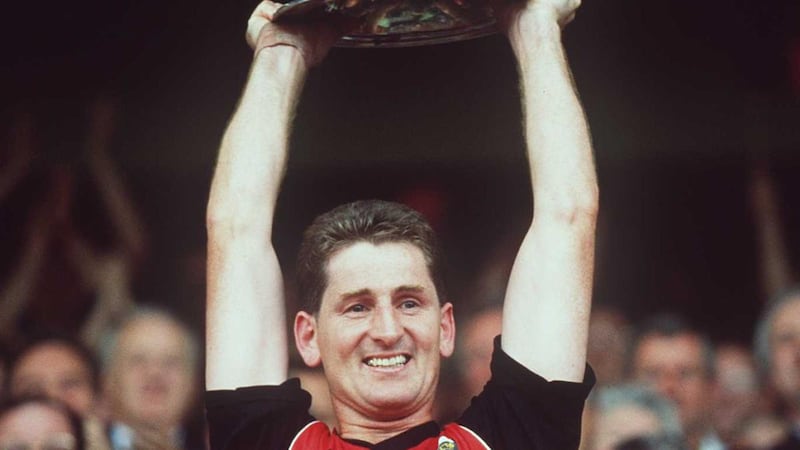
He’s not wrong. Twelve provincial titles have yielded five All-Irelands, a ratio of little more than 2:1. Cavan have the same number of All-Irelands but from more than three times as many Ulster wins.
Will they end up like Cavan with their best days receding farther into the past? Is the legacy of the 1960s and ’90s becoming like some artefact in a display case rather than a living tradition?
This weekend Down face Donegal 30 years after they beat them in the Ulster final on the road to destiny.
“Of the fellas involved on Sunday,” says Carr, “there’s a couple in the 30s but the rest are in their 20s and weren’t even born when this happened.”













